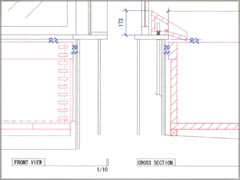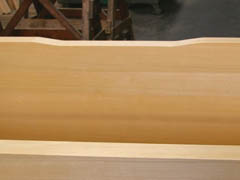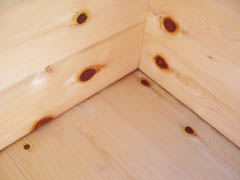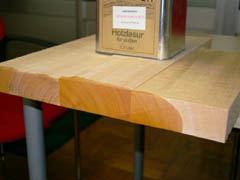waterproofing

You should have at least 1/2" of clearance around the tub. This allows for seasonal shrinking and dilatation and facilitates the circulation of air between tub and wall.
There are 3 solutions for this detail:
- leave the narrow gap open (traditional japanese way). Water flows between the wall and tub, keeping the outside face of the tub clean.
- seal the gap with caulking
- plug the gap with thin stripes of hinoki that are wedged inside (we can supply those free of charge).

When you enter a japanese tub, the water will overflow from the top in the 4 directions. If you want to direct the overlow in one direction only, we can apply this type of cut both for singl plank tubs or kamachi frame tubs. Another option for the overflow is to have a couple of drain fittings about 50mm o.c. below the border, connected to the drain. The disadvantage is you will hear the noise of water and air being skimmed and sucked. See also notes about waterproofing in the installation section

If you look closely, you will notice some buffer material between bottom and wall planks. This is hinoki bark which is used as a natural waterproofing/fungicidal material at the connection between bottom and wall planks.

The hinoki wood is never uretan coated in order to allow the wood pores to breath and release aromatic oils. As an extra precaution, we may propose to finish the sides facing the walls (outside face only) or the bottom with a natural clear oil produced by the german company KREIDEZEIT. http://www.kreidezeit.de/
Leave a Comment